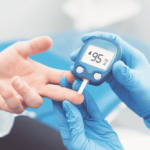Health is an important asset, and it’s a topic that also touches on vital issues. A common aspect of health issues is that they vary, and so do the techniques for managing them the right way.
For medical professionals and the general public, learning about these issues can have many benefits. The benefits include the preventative, management, and treatment aspects of pathogens.
So, this guide looks at all these helpful details on bloodborne pathogens, learn more about bloodborne pathogens training. Such health complications can have serious side effects without the proper management programs.
What are Blood Borne Pathogens?
These are disease-causing microorganisms that can exist in the body. A few of the common pathogens you are likely to come across include Hepatitis B (HBV), Hepatitis C (HCV), and Human Immunodeficiency Virus (HIV). Usually, these pathogens vary in symptoms and modes of transmission.
The common symptoms of such health issues often vary based on various factors including the location, specific variation of infection, immunity, and identification. Notably, different people have varyings risks of contracting such diseases.
The high risk category include first responders, housekeeping personnel, and health professionals. Besides, negligent individuals are also prone to such pathogens. While there are several types of bloodborne pathogens, we shall look at few common ones:
Human Immunodeficiency Virus (HIV)
HIV is a virus that compromises the immune system in your body, such that you can no longer fight infection. Once the disease sets in, you might experience various symptoms, including night sweats, flu-like symptoms, and regular weight loss.You might also be prone to various other secondary diseases such as fungal infections, pneumonia, and intestinal issues.
The notable aspect about HIV is that it’s not often easy to detect during the early stages. Researchers have also attributed this detection issue to a lack of proper testing measures.
Hepatitis B Virus (HBV)
Hepatitis B virus can lead to various health complications, including liver damage and, eventually, death. A few common symptoms of the disease include abdominal pain, nausea, fever, and jaundice.
Medical experts have also linked HBV strongly to issues such as liver cancer and liver cirrhosis. Furthermore, people who get the disease during birth are likely to suffer from recurring infections.
While various treatments can help manage the infection, there is no known cure. Diagnosis requires imaging and tab testing procedures. However, the disease is preventable through vaccines.
Hepatitis C Virus (HCV)
Hepatitis C virus can lead to severe complications to organs such as the liver, which can be severe. Furthermore, the infection often occurs without any symptoms. The lack of a proper vaccine for HCV makes it one of the most lethal bloodborne pathogens in the world. The common signs of the disease include fatigue, poor appetite, and bruising easily.
Malaria
Malaria is a severe infectious disease spread by a female mosquito (anopheles) or blood transfusion. People who get malaria will experience different symptoms, including chills, fever, and flu-like symptoms. The specific types of malaria vary with environment and location. Moreover, the infection is preventable by vaccine.
Common Modes of Transmission
A bloodborne pathogen transfers through blood or bodily fluids. The pathogens can also travel through cuts, puncture wounds, and bites. The four common main ways the bloodborne pathogens transmit include:
Through Direct Contact
Direct contact occurs when body fluids enter a secondary person’s body. Some common examples include sexual intercourse and medical treatment. Direct contact can be in public locations without adequate spacing. Some common examples include concerts, gaming arenas, or even grocery stores.
Indirect Contact
Some pathogens can survive on surfaces for several days, especially with the right conditions. Indirect contact may occur when fluids contaminate surfaces and get into an individual’s body. A good example would be when an infected sharp object penetrates the skin or makes contact with an open wound.
Respiratory Droplet Transmission
The transmission can also occur through respiratory droplet transmission. For instance, this transmission occurs when the infected person sneezes or coughs close to a healthy individual.
Vector-Borne Transmission
A vector-borne disease refers to an infection that transmits through bites from an infected insect species. The common insects include bugs, ticks, and mosquitoes.
Prevention of Bloodborne Pathogens
You have to stick to the standard health precautions to help control the spread of pathogens and other health issues. Using these measures is particularly important in high exposure settings. A few of the criteria include:
Wearing and Disposing Protective Gear Correctly
Wearing and disposing of protective gear correctly is crucial, as researchers have associated many health issues with such negligence. Medical health professionals have to wear masks and gloves before working on a patient with a bloodborne pathogen. Furthermore, disposing of these resources the right way is vital to control contamination and infections.
Removing and Replacing Physical Hazards
Removing any physical hazards that can puncture the skin in medical settings is essential. These can include equipment such as syringes that lack proper safety mechanisms.
Remember to opt for safer alternatives whenever possible to help reduce the risk of exposure.
The other vital technique in managing such health issues would be to replace any hazardous work equipment.
Administrative Measures
You may have to find ways to address the culture or tendencies of people in a particular environment. A good example would be to apply suitable safety measures, such as banners, reminders, and incentives.
Encouraging a positive attitude to the management of such issues is likely to reduce the risk of exposure. It encourages people to follow through with the recommended practices for preventing pathogen infections.
Awareness Programs
These are measures that help inform people about the nature of a specific issue. For bloodborne pathogens, awareness programs can include voluntary classes, training programs, and exposure techniques.
The goal of these programs is to help make people accountable for any behaviour that can lead to health issues. Awareness programs also provide the perfect opportunity to share protective gear such as masks and gloves.
What is Bloodborne Pathogen Training?
It’s a type of training that provides in-depth information on specific pathogens and health standards required to manage them. Usually, the training is required to meet standards set by the Occupational Safety and Health Administration (OSHA).
While the training is not mandatory for all health professionals, it’s essential for managing such infections. The courses often include up-to-date and well-researched information on conditions in this category. The training is also vital for people who manage bodily fluids, organs, and risky health devices.
Other possible causes of infections include:
Body Fluids
Human body fluids can include semen, amniotic fluid, and saliva. Usually, people exchange such fluids during intimacy, birth, and blood transfusion.
Contaminated Organs
Refers to any organ or tissue from an infected person that gets to a healthy individual. A common example would be HIV which is not often easy to detect during its early stages of development.
Tissue Culture
Refers to any collection of cells that contain infectious pathogens. People such as lab technicians, nurses, and cleaning staff are at risk of exposure from pathogens in tissue culture.
What is The Importance of Bloodborne Pathogen Training?
If you are in the medical health profession or have to handle risky materials, this training is for you. The training can also be ideal for the general public, especially for people tasked with basic health care tasks.
A few benefits of these programs include:
Learning About Preventive Measures
Prevention is always better than a cure, and this applies to any bloodborne pathogen. So, these training programs provide in-depth information on preventing further infection. A good example would be training on sanitizing surfaces or eliminating contaminated items.
Using Equipment Correctly
The training offers helpful information on using personal protective equipment the right way. The equipment in this category include masks, gloves, and scrubs. Note to correctly manage and use disinfecting supplies and techniques.
Furthermore, the training can also include information on using non-disposable items correctly. A few of these items include surgical knives, scissors, and sanitary containers.
Techniques for Proper Hygiene
Pathogens such as the Hepatitis B virus can survive on surfaces for up to seven days. You will learn about the proper hygiene techniques for the body, surfaces, and medical gear. The standard methods in this category include washing hands and handling contaminated materials the right way.
Disease Management
Once an infection occurs, the next important thing is to be informed about the proper management techniques.
You should learn about a few practical techniques for managing infections, symptoms, and the expected recovery progress. Plus, you should learn about post-exposure and recovery strategies in case of any incidents.
Learning about new things is often essential, especially regarding our overall health and well-being. Bloodborne pathogens vary and can lead to secondary severe health issues. So, being informed is critical, and this can include various techniques. For instance, you can sign up for training or learn about the essential pathogen management solutions.
The Editorial Team at Healthcare Business Today is made up of skilled healthcare writers and experts, led by our managing editor, Daniel Casciato, who has over 25 years of experience in healthcare writing. Since 1998, we have produced compelling and informative content for numerous publications, establishing ourselves as a trusted resource for health and wellness information. We offer readers access to fresh health, medicine, science, and technology developments and the latest in patient news, emphasizing how these developments affect our lives.







